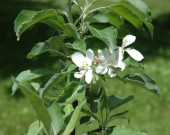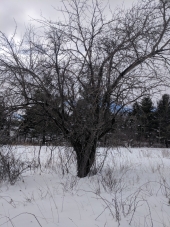To directly answer the original question: best source is already on the thread from s. lowe: a Demeter certified directory is exactly what you want.
http://biodynamicfood.org/ Go talk to those people, they will be your best first-hand source of information, much better than us yammering internet weirdos.
AND
I lived two summers on an Earthship project in Driggs, ID. There were 3 Demeter certified farms in the valley. Two of them supplied us with produce for our weekly wood fired pizza stand at the farmer's market. It was darn convenient when we ran out of topping to just pop over to their stand. Gotta say, fine tasty produce. I asked around a lot after that, and the consistent answer I got was this:
"Yeeeeah... I've heard good things about [biodynamics], but it's just not something that works into most practical farm schedules. You get done what you can get done." The realities of most farm life doesn't come with the luxury of extra time, for something that can seem rather silly. Tracey's right when she finds it unnecessary - there are plenty of practical ways to make your plants grow.
SO
My understanding of BD is limited but comes down to two basic parts:
(1) moon stuff and (2) preparations
(1) There's the lunar cycle, where the moon in different places corresponds to strengthening parts of the plant, much like a magnetic tide. It's not such a wild idea, especially because they've discovered cryptochromes in plants.
https://www.abc.net.au/science/articles/2014/01/24/3931083.htm
(2) The preparations and infamous "horn." Basically you're just making specific composts. A lot of this goes over my head. But it has a lot to do with minerals. IE - Horsetail is basically silica. Burying the horn is basically like creating the world's most amazing yogurt starter. Shape is also important here. The horn is the same shape created by the vortex - the little tornado that happens when you spin water really fast to poach an egg, the whirlpool when you drain your bathtub.
Is this a bunch of hooey?
This is my favorite part about biodynamics, and why is it utterly relevant to the conversation around "purple" and "brown" permaculture styles. Here's the hypothesis:
The more precisely you follow the recipe, the greater results you will see. And don't take my word for it! The best thing about science is that you do the experiments yourself, and accept the feedback. Biodynamics holds up brilliantly in brown because the more controlled you are about the process, the more you're gaining.
Following on with the browns and purples:
I had a revelation moment here in Australia. I've been living here for the past 16 months, saturating in the mindset of the original permaculture people. I'll see if I can explain it, because it's been swimming around as a vague concept in my mind.
See if you can shift your frame for a moment, whether you identify as brown or purple. Instead of a world where browns look down on purples, and purples discounts brown, what if you placed them on a spectrum? Much like we do at the beginning of a PDC, when students line up on the spectrum between "earth care" and "people care." And what if instead of purple and brown, you called them art and science. They are both so important to the whole of the permaculture movement - that odd global group of early adapters and ecological experimenters, who have seen enough of the current data to discern a disturbing pattern about human life on this planet and where it's heading.
Art is how we understand the world, how we process. Did you ever lose something, and listen to a sad song that helped you connect with how you were feeling? This is the essential value of art. Yes it's messy and silly and colorful and completely necessary in everything. Even farming. And the control of science helps us become better observers and caretakers, noting the subtleties and preciseness that the artists miss.
We need both. And it's time to build some heckin' bridges people.
This is what we've been training for.
IN CONCLUSION
Bury that horn Brandon! Then get back to us and see if it did anything!!!
Ramble over.
Thanks for reading if you made it this far!






